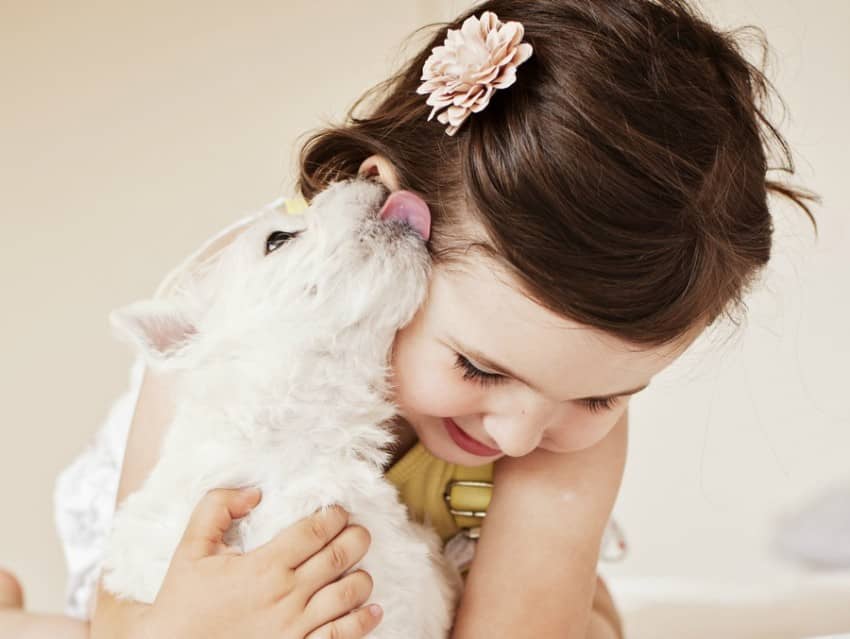When you first introduce a new dog to the family, there are plenty of things that could go wrong. Some dogs are not immediately social with everyone and some dogs are even dangerous before being properly introduced. This is not because the dogs are bad or even aggressive…it is just that some dogs have backgrounds and have not been raised properly to that point. Now that you have a new dog and want to introduce them to the family, here are several tips to make sure they are safely integrated.

Dog training tips to introduce your new dog to the family
Introducing a new dog to your household can be a wonderful experience, but it’s important to approach it with care and consideration. In this ultimate guide, we’ll walk you through the process of introducing your new dog to kids, other dogs, and cats, ensuring a harmonious and happy home for everyone involved.
General Tip for ALL Introduction
Let’s start with a very important general tip that applies to all introductions: Keep the dog on a leash when you first introduce them to family members and pets
When you first bring your new dog into the house, especially a home with other pets, make certain you keep him on a leash for first meetings. The reason is quite simple…the introduction can be unpredictable. With him on a leash, you should be able to control any outbursts or unhealthy reactions. This is especially true when two animals are meeting. Always have them both leashed for their own protection until you are sure they are going to get along.
Introducing Your Dog to Kids

Bringing a new dog into a household with children requires patience and a step-by-step approach. Here’s how to ensure a smooth introduction:
Preparing and “Training” Your Kids:
Your kids should know ahead of time what to do and what not to do where the dog is concerned. Talk to them about that first meeting and how to act around a puppy or new dog. Make sure they know to allow the dog to come to them first. Show them how to slowly extend a hand for them to get their scent. Let the dog make all the first moves. Most of all, don’t scare or startle the dog with sudden movements or sounds.
Initial Introduction:
Begin with a controlled, calm meeting between the dog and children. Make sure the dog is on a leash and allow the children to approach slowly and quietly, avoiding direct eye contact. Encourage them to offer treats or toys to create positive associations.
Supervised Interactions:
This is a good rule of thumb anytime your children meet new animals. The most friendly dogs in the world can have a bad experience with kids if only because they misread the signals. Animal and child reactions should be closely monitored and controlled until you have a clear confidence that they are okay together.
Establishing Boundaries:
Teach your children to respect the dog’s personal space, especially when it retreats to its designated area or crate. Encourage them to understand the dog’s body language and signals for discomfort, ensuring a safe and respectful environment for both dog and child.
Introducing Your Dog to Other Dogs

Introducing a new dog to an existing furry family member can be a delicate process. Follow these steps to make it go smoothly:
Neutral Territory:
Choose a neutral location, such as a park, for the initial meeting. This helps minimize territorial behavior and reduces the likelihood of conflict. Keep both dogs on leashes but allow them enough freedom to move and interact comfortably.
Parallel Walking:
Start by walking the dogs side by side, with a safe distance between them. Gradually decrease the distance over multiple walks, allowing them to get accustomed to each other’s presence.
Controlled Face-to-Face Introduction:
Once both dogs show signs of calmness and curiosity, it’s time for a face-to-face introduction. Keep the leashes loose and allow them to sniff and investigate each other. Avoid tugging on the leash or restraining either dog, as this can create tension.
Supervised Interactions:
After a successful initial meeting, progress to supervised interactions in a controlled environment. Watch for signs of aggression or discomfort and be prepared to separate the dogs if necessary. Gradually increase the duration and frequency of their interactions as they become more comfortable with each other.
Introducing Your Dog to Cats

Introducing a new dog to your resident feline requires a lot more careful planning and patience, especially if your pup has never seen a cat before.
Scent Exchange:
Before the physical introduction, allow the dog and cat to become familiar with each other’s scent. Swap bedding or toys between them to help them acclimate to each other’s presence.
Separated Spaces:
Create separate spaces for the dog and cat, ensuring they have their own safe zones. This allows both animals to adjust to each other’s presence without direct contact.
Visual Introduction:
Once the dog and cat have become accustomed to each other’s scent, you can proceed with a visual introduction. Use a baby gate or a screen door to create a barrier between them. Allow them to see each other while maintaining a safe distance.
Controlled Interactions:
Gradually increase the level of interaction between the dog and cat, always under close supervision. Start by opening the barrier slightly, allowing them to sniff and observe each other without direct contact. Reward both animals for calm and positive behavior.
Gradual Introduction:
Over time, you can progress to short, controlled face-to-face interactions. Keep the dog on a leash during these initial meetings to maintain control. If either animal shows signs of stress or aggression, separate them and try again later.
Safety Measures:
Ensure the cat has access to high places, such as shelves or cat trees, where it can retreat if it feels threatened. Provide separate feeding areas and litter boxes for each pet to avoid potential conflicts over resources.
Patience and Persistence:
Remember that the introduction process may take time. Be patient and allow the dog and cat to set their own pace. Some animals may become fast friends, while others may require more time to adjust. Respect their boundaries and provide plenty of positive reinforcement throughout the process.
Bonus Tips for Successful Introductions:
Maintain a Calm Environment: During the introduction process, create a calm and stress-free environment for all the pets involved. Loud noises, chaotic activities, or sudden changes can increase anxiety and tension. Keep the atmosphere relaxed to facilitate positive interactions.
Individual Attention: Ensure each pet receives individual attention and quality time with their human family members. This helps prevent jealousy and reinforces the bond between each pet and their humans.
Professional Guidance: If you’re unsure about the introduction process or if there are specific concerns, don’t hesitate to seek advice from a professional dog trainer or animal behaviorist. They can provide personalized guidance based on your specific situation.
Have Rewards ready: During a stressful time like this, you want to make sure you have rewards ready to give the dog positive reinforcement. When he or she responds properly to the situation, reward them. They will get the picture soon enough.
Observe your dog’s body language: Dogs will give off signals about how they are feeling. They may sniff to get a scent and that is a good sign. Warning signs that problems could be brewing could include stiffness, a pointed unmoving tail, a closed mouth or growling and baring of teeth. All of these are signs that the dog is not comfortable and they need some space.
Remember, every pet is unique, and the introduction process may vary depending on their personalities and past experiences. With patience, positive reinforcement, and gradual introductions, you can create a loving and harmonious environment for all the furry members of your family.


